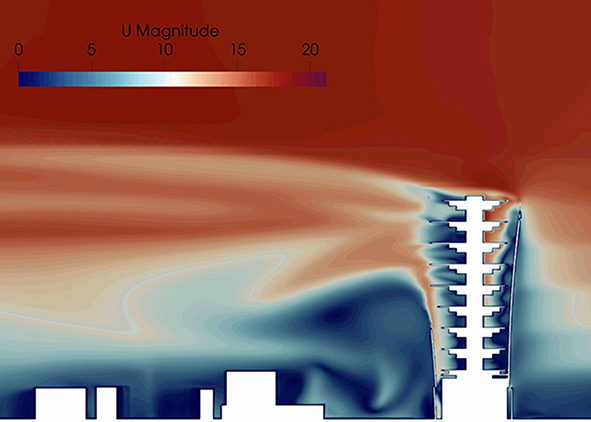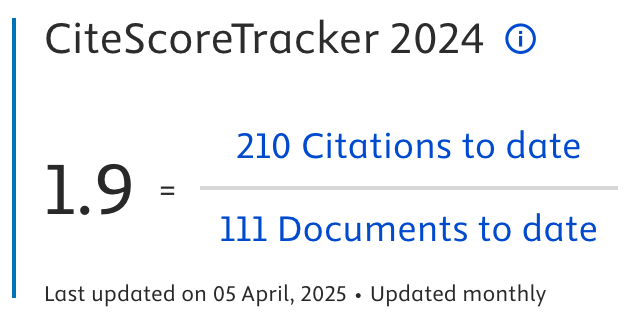Computational Intelligences in the post-Environmental Design. Examples from MAILB
DOI:
https://doi.org/10.19229/2464-9309/542019Keywords:
co-evoluzionism, ecology, environmental design, parametric design, generative designAbstract
The article addresses the environmental question by critiquing the anthropocentric vision, still alive in the design debate and practice, as a remnant of the underlying dualism humanity/environment. It opposes the co-evolutionist and New Realism theses re-elaborated in the light of a new metalanguage (Digital Mathema) capable of ‘giving voice’ to the multitude of agents and to activate forms of collaborative intelligence (Computational Intelligences), enabling design explorations beyond established norms and the already known. Following is a description of Parametric and Generative Design and the Mailab research laboratory’s experiences. The conclusion is an invitation to reflect on the possible side effects that could arise from digital marking and from an excessive emphasis on the ‘know-how’.
Downloads
Article Metrics Graph
References
Agamben, G. (1995), Homo sacer, Einaudi, Torino.
Alexander, C. (1967), Note sulla sintesi della forma [or. ed. Notes on the Synthesis of Form, 1964], Il Saggiatore, Milano.
Andia, A. and Spiegelhalter, T. (2015), Post-Parametric Automation in Design and Construction, Artech House, Boston.
Asimow, M. (1968), Principi di progettazione [orig. ed. Introduction to Design, 1962], Marsilio, Venezia.
Bansal, J. C., Singh, P. K. and Pal, N. R. (eds) (2019), Evolutionary and Swarm Intelligence Algorithms, Springer, Cham.
Bottazzi, R. (2018), Digital architecture beyond computers – fragments of a cultural history of computational design, Bloomsbury Publishing Plc, London.
Capra, F. (1988; I ed. 1982) The turning Point – Science society and the rising culture, Bantam Book, Toronto.
Carson, R. (1994; I ed. 1962), Silent Spring, Houghton Mifflin Company, Boston (MA).
Christian, D. (2004), Maps of Time – An Introduction to Big History, University of California Press, Los Angeles.
Cichocka, J. M., Migalska, A., Browne, W. N. and Rodriguez, E. (2017), “The Implementation of Particle Swarm Optimization Algorithm in a Design Optimization Tool”, in Çağdaş, G., Özkar, M., Gül, L. F. and Gürer, E. (eds) (2017), Computer-Aided Architectural Design – Future Trajectories, Springer, Cham.
Crowley, J. E. (2001), The invention of comfort – Sensibilities & design in early Modern Britain & Early America, The John Hopkins University Press, Baltimore-London.
Dawkins, R. (2006; I ed. 1976), The self fish gene, Oxford University Press, Oxford.
Dawkins, R. (1996; I ed. 1986), The Blind Watchmaker, W. W. Norton & Company, New York.
Deleuze, G. and Guattari, F. (2005), A thousand plateaus – capitalism and schizophrenia [orig. ed. Mille Plateaux, 1980], University of Minnesota Press, Minneapolis-London.
Deutsch, R. (2015), Data-driven design and construction – 25 strategies for capturing, analyzing and applying building data, Wiley & Sons, Hoboken, New Jersey.
Fitch, J. M. (1947), American Building – The Forces that Shape it, The Riverside Press, Cambridge.
Foucault, M. (1988), Le parole e le cose [orig. ed. Les mots et les choses, 1966], Rizzoli, Milano.
Frazer, J. (1995), An Evolutionary Architecture, Architectural Association Press, London.
Harman, J. (2011), The Quadruple Object, Zero Books, Alfresford.
Johnston, W. A. (2005), “Third Nature: The Co-Evolution of Human Behaviour, Culture, and Technology”, in Nonlinear Dynamics, Psychology, and Life Sciences, vol. 9, n. 3. [Online] Available at: psych.utah.edu/_documents/psych4130/Third_Nature.pdf [Accessed: March 2018].
Kennedy, J., Eberhart, R. C. and Shi, Y. (2001), Swarm Intelligence, Morgan Kaufmann Publishers, San Francisco.
Kilian, A. and Ochsendorf, J. (2005), “Particle-spring systems for structural form finding”, in Journal of the International Association for Shell and Spatial Structures, vol. 46, n. 148, pp. 77-84. [Online] Available at: designexplorer.net/newscreens/cadenarytool/KilianOchsendorfIASS.pdf [Accessed: May 2017].
Latour, B. (2017), Facing Gaia. Eight Lectures on the New Climatic Regime [orig. ed. Face à Gaïa. Huit conférences sur le nouveau régime climatique, 2015], Polity Press, Cambridge (UK) - Medford (MA).
Lovelock, J. (2000; I ed. 1979), Gaia – A new look at the life on Earth, Oxford University Press, Oxford.
Liu, C., Yang, J., Kohli, P. and Furukawa, Y. (2017), “Raster-to-Vector: Revisiting Floorplan Transformation”, in International Conference on Computer Vision. [Online] Available at: art-programmer.github.io/floorplan-transformation/paper.pdf [Accessed: January 2018].
Lynn, G. (2004), “Introduction”, in Aa. Vv., Folding in Architecture, Wiley-Academy, Chirchester.
Lynn, G. (1999), “Animate Form”, in Lynn, G. (ed.), Animate Form, Princeton Architectural Press, New York (NY).
Lynn, G. (1998), Folds, Bodies & Blobs – Collected Essays, La Lettre Volée, Bruxelles.
Margulis, L. and Sagan, D. (1997; I ed. 1987), Microcosmos, University of California, Berkeley and Los Angeles Press, Berkeley-Los Angeles-London.
Maslow, A. H. (1992), Motivazione e personalità [or. ed. Motivation and Personality, 1954], Armando Editore, Roma.
Maturana, H. R. and Varela, F. G. (1980), “Autopiesis: the Organization of the Living”, in Maturana, H. R., and Varela, F. G. (eds), Autopiesis and Cognition [orig. ed. De máquinas y seres vivos, 1972], Reidel, Dordrecht, pp. 63-134.
Meadows, D. et alii (1972), The Limits to Growth, Universe Book, New York (NY).
Morton, T. (2018), Being Ecological, Pelican Book, London.
Mumford, L. (1952), Art and Technics, Columbia University Press, New York (NY).
Negroponte, N. (1975; I ed. 1970), Soft Architecture Machines, The MIT Press, Cambridge-London.
Naess, A. (1989), Ecology, community and lifestyle [or. ed. Økologi, samfunn, og livsstil, 1976], Cambridge University Press, Cambridge (UK).
Ridolfi, G. (2018), “Bim e simulazione ambientale nelle fasi iniziali del progetto”, in Ceccherini Nelli, L. (ed.), Soluzioni innovative di risparmio energetico per edifici Nearly Zero Energy, Didapress, Firenze.
Ridolfi, G. and Saberi, A. (2016), “Learning Design Through Designerly Thinking: Holistic Digital Modeling in a graduate program in Architecture”, in Słyk, J. and Bezerra, L. (eds.), Education for research – Research for Creativity, Wydziaf Architektur Politechniki Warszawskeiej, Warszawa.
Ridolfi, G., Saberi, A. and Bakhshaei, O. (2019), “High | Bombastic – Adaptive skin conceptual prototype for Mediterranean climate”, in Sayigh, A. (ed.), Sustainable Building for a Cleaner Environment. Springer, Cham.
Schumacher, P. (ed.) (2016), “Parametricism 2.0: Rethinking Architecture’s Agenda for the 21st Century”, in Architectural Design, vol. 86, pp. 18-23.
Schumacher, P. (2009), “Parametricism: A New Global Style for Architecture and Urban Design”, in Architectural Design, vol. 79, issue 4, pp. 14-23.
Schumacher, P. (2008), Parametricism as Style. Parametricist Manifesto. [Online] Available at: www.digitalmanifesto.net/manifestos/76/ [Accessed: July 2015].
Serres, M. (2011), Betrayal – The Thanatocracy [or. ed. “Trahison: la thanatocratie”, in Serres, M. (ed.), Hermès III: La traduction, 1974], Édition de Minuit, Paris. [Online] Available at: issuu.com/randisi/docs/serres__betrayal [Accessed: March 2016].
Serres, M. (2006), Revisiting the Natural Contract, talk at Simon Fraser University on May 4. [Online] Available at: www.sfu.ca/humanities-institute-old/pdf/Naturalcontract.pdf [Accessed: March 2016].
Serres, M. (1998), The Natural Contract [orig. ed. Le contract Naturel, 1990], The University of Michigan Press, Ann Arbor (MI).
Vagnetti, L. (1973), L’architetto nella storia di Occidente, Teorema Edizioni, Firenze.
Wiener, N. (1966), Introduzione alla cibernetica [orig. ed. The human use of human beings. Cybernetics and Society, 1950], Bollati Boringhieri, Torino, pp. 203-204.
Woodbury, R. (2010), Elements of parametric design, Routledge, Abingdon.

Downloads
Published
How to Cite
Issue
Section
License
This Journal is published under Creative Commons Attribution Licence 4.0 (CC-BY).
License scheme | Legal code
This License allows anyone to:
Share: copy and redistribute the material in any medium or format.
Adapt: remix, transform, and build upon the material for any purpose, even commercially.
Under the following terms
Attribution: Users must give appropriate credit, provide a link to the license, and indicate if changes were made; users may do so in any reasonable manner, but not in any way that suggests the licensor endorses them or their use.
No additional restrictions: Users may not apply legal terms or technological measures that legally restrict others from doing anything the license permits.
Notices
Users do not have to comply with the license for elements of the material in the public domain or where your use is permitted by an applicable exception or limitation.
No warranties are given. The license may not give users all of the permissions necessary for their intended use. For example, other rights such as publicity, privacy, or moral rights may limit how you use the material.


















































































